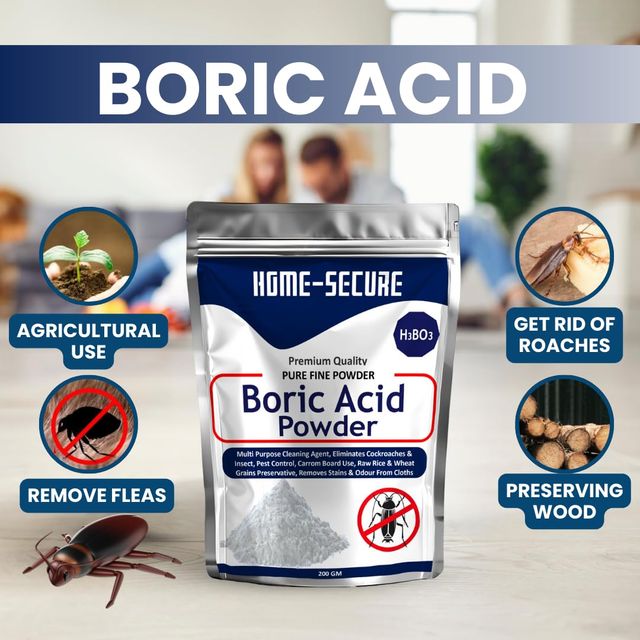Discover 10 Must-Try Chemistry Experiments You Can Do at Home
Chemistry is not just a subject confined to classrooms and laboratories; it’s a dynamic science that you can explore right in your own home. Whether you’re looking to satisfy your curiosity or engage in hands-on learning, these 10 chemistry experiments are perfect for enthusiasts of all ages. From creating colorful reactions to exploring the mysteries of chemical transformations, each experiment offers a blend of education and excitement. Let’s dive into the world of chemistry with these must-try experiments you can easily conduct in your kitchen or backyard.
Precautions for Home Chemistry Experiments
Before delving into any experiment, it’s essential to ensure safety precautions are in place. Here are some key tips:
1. Wear Proper Protective Gear
Always wear safety goggles and gloves to protect your eyes and skin from chemicals.
2. Work in a Well-Ventilated Area
Perform experiments in a room with good airflow to avoid inhaling any fumes.
3. Read and Understand Instructions
Carefully read experiment instructions and understand potential risks before starting.
1. Creating an Erupting Volcano
Overview: Simulate a volcanic eruption using a simple chemical reaction.
Materials:
- Small plastic bottle
- Baking soda
- Vinegar
- Red food coloring (optional)
- Dish soap
- Modeling clay
- Safety goggles
Procedure:
- Mold the modeling clay around the plastic bottle to create a volcano shape.
- Place a tablespoon of baking soda inside the bottle.
- Add a few drops of red food coloring and a squirt of dish soap.
- Pour vinegar into the bottle and watch as the volcano erupts with fizzing foam!
Chemistry Behind It: Vinegar (acetic acid) reacts with baking soda (sodium bicarbonate) to produce carbon dioxide gas. The soap traps the gas, creating the eruption effect.
2. Making Invisible Ink
Overview: Write secret messages that appear only under certain conditions.
Materials:
- Lemon juice or vinegar
- Cotton swabs or paintbrushes
- Paper
- Heat source (hair dryer, iron, or oven)
- Safety goggles
Procedure:
- Dip a cotton swab or paintbrush into lemon juice or vinegar.
- Write a message on paper.
- Allow the paper to dry completely.
- To reveal the message, gently heat the paper with a hair dryer or iron.
Chemistry Behind It: The acidic lemon juice weakens the paper, making the message invisible. Heating the paper causes a chemical reaction (browning) that reveals the hidden message.
3. Exploring Density with Layered Liquids
Overview: Create a colorful display of liquids with different densities that don’t mix.
Materials:
- Honey
- Corn syrup
- Dish soap
- Water
- Vegetable oil
- Rubbing alcohol
- Food coloring (optional)
- Tall, clear glass or jar
- Safety goggles
Procedure:
- Carefully layer each liquid in the glass or jar, starting with the most dense (honey) and ending with the least dense (rubbing alcohol).
- Pour each liquid slowly and observe as they form distinct layers.
Chemistry Behind It: Different liquids have varying densities due to their molecular composition. Heavier liquids sink below lighter ones, creating visible layers.
4. Making Slime
Overview: Create a stretchy, gooey substance known as slime.
Materials:
- White school glue (e.g., Elmer’s glue)
- Borax powder
- Water
- Food coloring (optional)
- Safety goggles and gloves
Procedure:
- Mix 1/2 cup of glue with 1/2 cup of water in a bowl.
- Add a few drops of food coloring if desired.
- In a separate container, mix 1 teaspoon of borax powder with 1 cup of water until dissolved.
- Slowly add the borax solution to the glue mixture, stirring continuously until slime forms.
Chemistry Behind It: Borax molecules cross-link the polymer chains in the glue, creating a stretchy and slimy texture.
5. Testing Acids and Bases with Red Cabbage Indicator
Overview: Create a natural pH indicator using red cabbage and test household substances.
Materials:
- Red cabbage
- Blender
- Strainer
- Various household substances (vinegar, baking soda solution, lemon juice, etc.)
- Safety goggles and gloves
Procedure:
- Blend the red cabbage with water and strain to extract the juice.
- Use small portions of the cabbage juice to test the pH of different substances.
- Observe color changes: red for acids, purple for neutral substances, and green for bases.
Chemistry Behind It: Anthocyanin pigments in red cabbage change color based on the pH level of the solution, making it an excellent indicator of acidity or basicity.
Is kenza layli real ? World’s First Miss AI | Maya (mayathevoice.com)
6. Extracting DNA from Fruit – Discover 10 Must-Try Chemistry Experiments You Can Do at Home
Overview: Extract DNA from fruit to observe genetic material up close.
Materials:
- Fruit (e.g., strawberries)
- Dish soap
- Salt
- Water
- Rubbing alcohol
- Ziplock bag
- Coffee filter or cheesecloth
- Safety goggles and gloves
Procedure:
- Mash the fruit in a ziplock bag with water, dish soap, and salt.
- Filter the mixture through a coffee filter to obtain a liquid.
- Add rubbing alcohol to the liquid and observe the separation of DNA strands.
Chemistry Behind It: Dish soap breaks down cell membranes, releasing DNA. Rubbing alcohol causes DNA strands to precipitate out of the solution, making them visible.
7. Making Rainbow Fire – Discover 10 Must-Try Chemistry Experiments You Can Do at Home
Overview: Create a spectacular display of colored flames using common household chemicals.
Materials:
- Fireproof dish or bowl
- Rubbing alcohol (isopropyl alcohol)
- Table salt
- Borax powder
- Copper sulfate (optional)
- Safety goggles and gloves
Procedure:
- Pour a small amount of rubbing alcohol into the fireproof dish.
- Add a pinch of salt, borax powder, and copper sulfate (if available) to the alcohol.
- Light the alcohol on fire and observe the colorful flames.
Chemistry Behind It: Different metal salts emit characteristic colors when burned. The flames change color due to the presence of metal ions from the added chemicals.
8. Growing Crystals – Discover 10 Must-Try Chemistry Experiments You Can Do at Home
Overview: Grow beautiful crystals from a supersaturated solution.
Materials:
- Epsom salt (magnesium sulfate) or sugar
- Water
- Glass or jar
- String or pipe cleaner
- Safety goggles
Procedure:
- Heat the water in a saucepan until it is nearly boiling.
- Add Epsom salt or sugar to the water, stirring until dissolved.
- Put the solution into a glass or jar.
- Tie a string or suspend a pipe cleaner in the solution and leave it undisturbed for several days to allow crystals to form.
Chemistry Behind It: As the solution cools, the solute (Epsom salt or sugar) molecules come together and solidify into crystalline structures.
10 advantages of biofuels | Maya (mayathevoice.com)
9. Making Elephant Toothpaste – Discover 10 Must-Try Chemistry Experiments You Can Do at Home
Overview: Create a foamy eruption resembling toothpaste being squeezed from a tube.
Materials:
- 6% hydrogen peroxide solution
- Dry yeast
- Liquid dish soap
- Warm water
- Food coloring (optional)
- Safety goggles and gloves
Procedure:
- Move the hydrogen peroxide into a plastic bottle.
- Add a few drops of food coloring and liquid dish soap to the bottle.
- In a separate container, mix dry yeast with warm water until dissolved.
- Quickly pour the yeast mixture into the bottle and step back to observe the foam eruption.
Chemistry Behind It: Hydrogen peroxide decomposes into water and oxygen gas. The soap traps the oxygen, creating foam. Yeast acts as a catalyst, speeding up the reaction.
10. Exploring Electrolysis with Potato Power – Discover 10 Must-Try Chemistry Experiments You Can Do at Home
Overview: Harness the power of electrolysis to generate hydrogen gas using a potato.
Materials:
- Potato
- Copper and zinc electrodes (e.g., pennies and galvanized nails)
- Alligator clips
- Saltwater
- Multimeter (optional)
- Safety goggles and gloves
Procedure:
- Insert a copper and zinc electrode into a potato, ensuring they don’t touch.
- Connect the electrodes to a power source using alligator clips.
- Submerge the electrodes in saltwater.
- Observe bubbles forming at each electrode, indicating the production of hydrogen and oxygen gases.
Chemistry Behind It: Electrolysis occurs when an electric current passes through a solution (saltwater), breaking water molecules into hydrogen and oxygen gases.
Conclusion – Discover 10 Must-Try Chemistry Experiments You Can Do at Home
These 10 chemistry experiments offer a gateway to understanding fundamental concepts and principles through hands-on exploration. Whether you’re fascinated by chemical reactions, molecular structures, or the wonders of color-changing substances, there’s something here to ignite your curiosity and inspire further discovery. Remember to always prioritize safety, follow instructions carefully, and most importantly, have fun uncovering the secrets of chemistry right in your own home!



